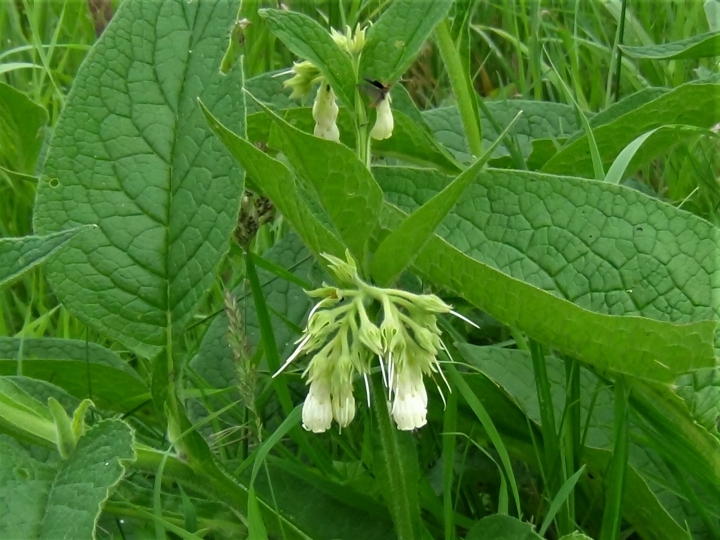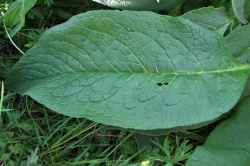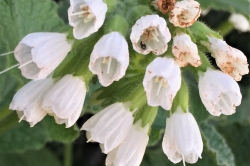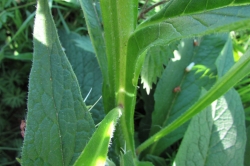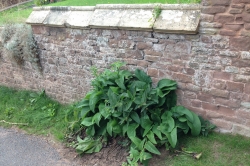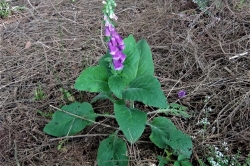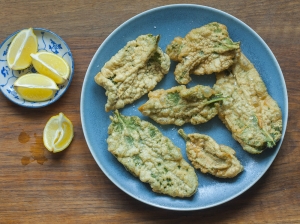A common and surprisingly tasty treat when battered and fried. See the Hedgerow Medicinal section below, before consumption.
Home / Hedgerow Guide /
Comfrey
Comfrey
| Hedgerow Type | |
| Common Names | Knitbone |
| Scientific Name | Symphytum officinale |
| Season Start | May |
| Season End | Oct |
Leaves
Large, broad, lance shaped, hairy and sometimes variegated leaves. The leaf edges extend down the stem, giving a winged appearance to the stem.
Flowers
Comfrey has clusters of bell/trumpet shaped flowers that can be white, pink, yellow, blue, red or purple.
Possible Confusion
Foxglove, Digitalis purpurea, leaves look very similar before flowering but the flowers of Foxglove are different, being deeply trumpet-shaped, large and purple. Pictured.
Green Alkanet is also similar, but again the flowers are quite different, rather more like Forget Me Not flowers, being small, flat and bright blue.
Taste
Unique.
Frequency
Common.
Collecting
Only pick from white flowered Comfrey, see below. The younger, higher up leaves are more succulent to use as a green but the older, thicker leaves are better for making fritters from. People have used the stems, cooking them a little like asparagus. The roots have been used roasted as a coffee substitute, mixed with Dandelion.
Medicinal Uses
Comfrey contains pyrrolizidine alkaloids some of which can harm the liver so some foragers no longer consider this a safe plant to eat but we still eat Comfrey fritters from time to time as have many people with no obvious ill effects. Quantity is the key, a little every now and again is not likely to cause any harm.
White flowered Comfrey does not contain echimidine, the pyrrolizine alkaloid that is causing concern at the moment, so wait until the plant flowers to be sure you only eat from this safer variety. Comfrey has long been used to ‘knit bones’, used as a poultice it it is said to help broken bones heal although this may originate from the grated root being used like plaster of Paris, as it can be moulded before setting very hard.
As with a lot of plants Comfrey is said to treat many different conditions but none seem to have been scientifically proven, although the pharmaceutical industry take quite an interest in this plant.
Other Facts
Composted Comfrey leaves make one of the best fertilizers known and helps enrich the soil with nitrogen.
Comfrey and other members of family Boraginaceae have a special fungal pathogen, called Comfrey Rust (Melampsorella symphyti), which appears on the rear side of the Comfrey leaves. The undersides may be completely covered with the rusty orange-yellow coloured uredinia, (see picture). Uredinia are pustules which form from a mass of hyphae and spores of a rust fungus, which then rupture the host’s cuticle. Comfrey Rust is a common fungal disease in the UK.



 (29 votes, average: 3.72 out of 5)
(29 votes, average: 3.72 out of 5)